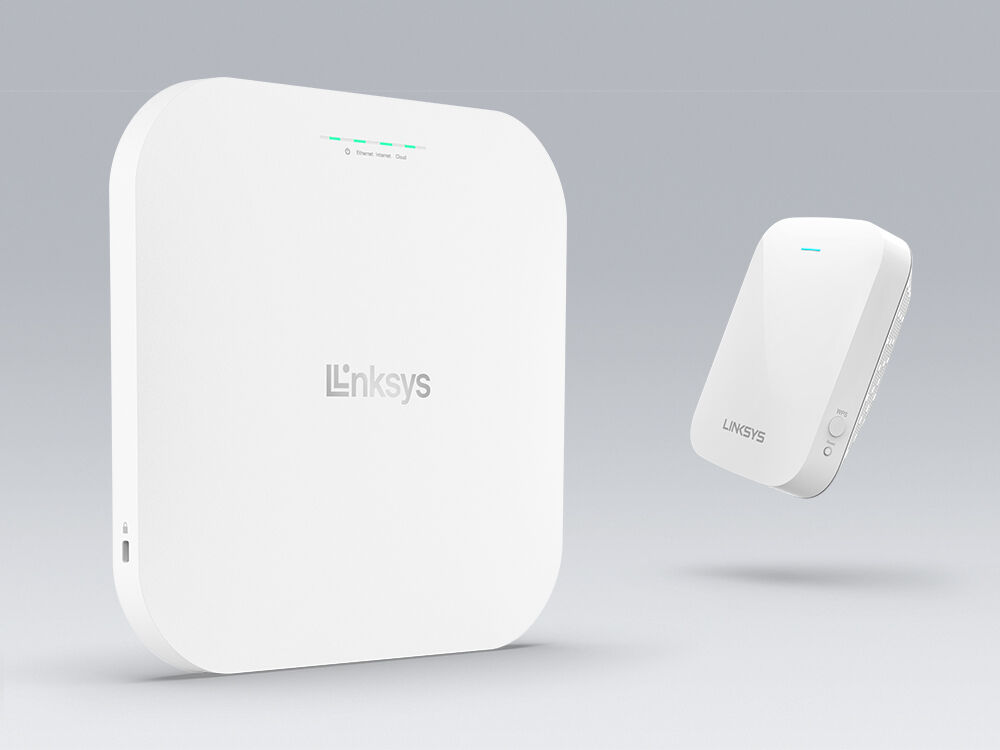Top Benefits of Using a Wireless Access Point in Your Network
In today’s rapidly evolving digital landscape, robust internet connectivity is not just a luxury—it’s a necessity. Businesses large and small are increasingly turning to wireless access points (WAPs) to enhance their networking capabilities. A wireless access point serves as a crucial bridge between wired networks and wireless devices, addressing the growing demand for reliable internet access in various environments. As organizations expand and more devices come online, understanding the top benefits of using a wireless access point in your network becomes essential for maintaining competitive advantage and operational efficiency.
One of the primary advantages of deploying a wireless access point is the enhanced connectivity it provides. Unlike traditional networks that rely solely on wired connections, WAPs allow multiple devices to connect wirelessly, optimizing the use of space and resources. This flexibility is vital in today’s workplaces, where employees often need to move around with laptops or tablets while staying connected to the network. Furthermore, a well-implemented WAP setup can eliminate dead zones and extend coverage throughout the premises, ensuring that productivity remains uninterrupted.
Security is another crucial benefit of using a wireless access point. As businesses increasingly rely on digital resources, safeguarding data has become a top priority. Modern WAPs come equipped with advanced security features, such as WPA3 encryption, that protect sensitive information from unauthorized access. Additionally, businesses can segment their networks, creating guest access options while maintaining a strong, secure main network. Such capabilities are essential in a world where cyber threats are becoming more sophisticated, ensuring that your organization’s data remains secure while still providing convenient internet access to guests and clients.
In this article, we will delve deeper into the specific benefits of using a wireless access point in your network. From improved coverage and increased flexibility to greater scalability and cost-effectiveness, we will explore the various reasons why WAPs have become a staple in modern networking. By the end of this guide, you will have a comprehensive understanding of how deploying a wireless access point can enhance your organization’s overall performance and security, paving the way for operational success in an increasingly interconnected world.
Enhanced Connectivity and Coverage
One of the standout benefits of using a wireless access point in your network is the remarkable enhancement in connectivity it offers. Traditional wired networks often limit users to specific locations, requiring a physical connection to the network. In contrast, wireless access points break down these barriers by allowing users to connect wirelessly from various locations, greatly increasing flexibility. This capability is particularly valuable in environments such as large offices, universities, or public spaces, where mobility and the ability to connect from anywhere are crucial for productivity.
Moreover, wireless access points can significantly improve the overall coverage of a network. A single WAP can only cover a limited area, but by deploying multiple access points throughout a facility, organizations can ensure seamless connectivity across large spaces. For instance, in a multi-story building, strategically placing access points on each floor guarantees that employees can access the network without encountering dead zones. By addressing coverage limitations, businesses can create a more cohesive working environment, enabling employees and guests to stay connected no matter where they are in a given space.
Furthermore, many modern wireless access points are designed with advanced features that enhance signal strength and quality. Technologies like Beamforming and MU-MIMO optimize the communication between the access point and the connected devices, enabling the system to prioritize traffic and efficiently distribute bandwidth. This optimization ensures that multiple devices can connect simultaneously without degrading performance. In today’s digital ecosystem, where remote work and wireless communication are becoming the norm, harnessing the connectivity and coverage benefits of WAPs can propel an organization’s efficiency to new heights.
Improved Security Measures
As digital threats continue to evolve, so must the security measures that organizations put in place to protect their data. Utilizing a wireless access point enhances security by implementing advanced encryption protocols, such as WPA3. This setup safeguards sensitive information transmitted over the network, making it significantly harder for unauthorized users to gain access. As businesses increasingly rely on digital operations, prioritizing security is paramount. An access point can act as a robust barrier against data breaches, helping to secure both internal communications and external transactions.
In addition to encryption protocols, wireless access points allow businesses to create segmented networks. This capability enables organizations to separate their main business network from guest access networks. By providing a dedicated guest network, WAPs ensure that guests can connect to the internet without compromising sensitive information or exposing the main network to potential vulnerabilities. This separation is particularly advantageous for businesses that frequently host clients or partners, allowing them to maintain tight control over their data security while providing convenient access to visitors.
Furthermore, many modern wireless access points come equipped with additional security features such as intrusion detection systems and real-time monitoring. These functionalities allow network administrators to track access attempts and quickly identify any suspicious activities. By proactively managing network security through WAPs, businesses can safeguard against potential breaches and respond swiftly to threats. As security breaches become more common, investing in a reliable wireless access point is a critical step toward protecting both organizational and client data.
Scalability and Flexibility
Scalability is a significant advantage of adopting wireless access points in business networks. As organizations grow, their networking needs will inevitably change. Wireless access points make it easy to expand the network’s reach and capabilities without overhauling the existing infrastructure. By simply adding more access points, businesses can accommodate additional devices and users efficiently. This level of scalability is particularly advantageous for growing companies that anticipate fluctuating demands, enabling them to adapt quickly to changing circumstances without incurring excessive costs.
In addition to scalability, wireless access points provide unmatched flexibility. Employees often prefer to work in different locations, whether that’s within the office, at home, or on the go. WAPs support this flexible work style by providing connections across an expansive area without the need for cumbersome cables. With reliable wireless connectivity, teams can collaborate more effectively, allowing employees to choose their preferred working environment while staying connected to the same network. This flexibility can enhance employee satisfaction and retention by fostering a work culture that prioritizes comfort and productivity.
Moreover, the use of cloud-managed access points offers an additional layer of flexibility from a management standpoint. Companies can monitor and manage their access points remotely, making it easy to deploy software updates, adjust settings, and troubleshoot issues without physical access to the devices. This cloud-based management capability allows organizations to maintain a robust and efficient network that is adaptable to evolving business requirements. The convergence of scalability and flexibility reinforces the need for wireless access points in today’s dynamic organizational structures.
Cost-Effectiveness and ROI
Investing in wireless access points can lead to significant cost savings, making them an attractive option for businesses looking to optimize their operations. While the initial expenditure of purchasing WAPs may seem steep, the long-term benefits often outweigh these costs. By facilitating wireless connectivity, businesses can reduce reliance on wired networking infrastructure. This shift can lead to lower installation expenses, as running cables through walls and ceilings can be time-consuming and labor-intensive. Moreover, wireless access points eliminate the need for additional hardware like switches, thus providing an overall reduction in costs.
Additionally, the increased productivity that results from improved connectivity and performance can translate into higher returns on investment (ROI). With reliable wireless networks, employees can work more efficiently and collaboratively. This increased efficiency can result in faster project completions and higher output quality, ultimately contributing to revenue growth. When employees can seamlessly connect, share information, and collaborate, it creates a positive impact on overall business performance. Therefore, by investing in wireless access points, companies can create a more conducive working environment that promotes productivity and innovation.
Lastly, the ability to scale and adapt to changing needs further enhances the cost-effectiveness of wireless access points. By accommodating new technology and additional devices without significant overhead, organizations can future-proof their investments. The flexibility of access points allows companies to respond quickly to market dynamics and internal changes, ensuring continued operational success. Thus, the strategic implementation of wireless access points not only optimizes current infrastructure but also prepares businesses for future growth, making it a wise investment in a competitive landscape.
Conclusion
Ultimately, the adoption of wireless access points in your network brings a multitude of benefits that can enhance your organizational capabilities in today’s connected world. From improved connectivity and coverage to robust security measures, the advantages of using WAPs are profound and multifaceted. For businesses striving for efficiency, scalability, and a responsive work environment, implementing wireless access points translates to greater flexibility and functionality that aligns with modern operational needs.
Furthermore, the enhanced security features embedded in today’s WAPs guarantee that sensitive information remains protected, allowing organizations to navigate the complexities of cybersecurity confidently. The ability to establish segmented networks ensures that companies can provide guest access while safeguarding their primary network. In an era where data breaches have become increasingly prevalent, investing in a secure wireless access point is not merely an option—it’s a necessity for modern businesses.
The scalability and flexibility offered by wireless access points prepare organizations for the future, fostering a dynamic work environment that accommodates a diverse range of devices and user demands. The long-term cost-effectiveness of these technologies can significantly improve ROI, making wireless access points a wise investment for businesses aiming to thrive in an ever-changing digital landscape. In summary, the top benefits of using a wireless access point in your network create a foundation for operational excellence, empowering organizations to explore new horizons and unlock their full potential in a connectivity-driven age.




